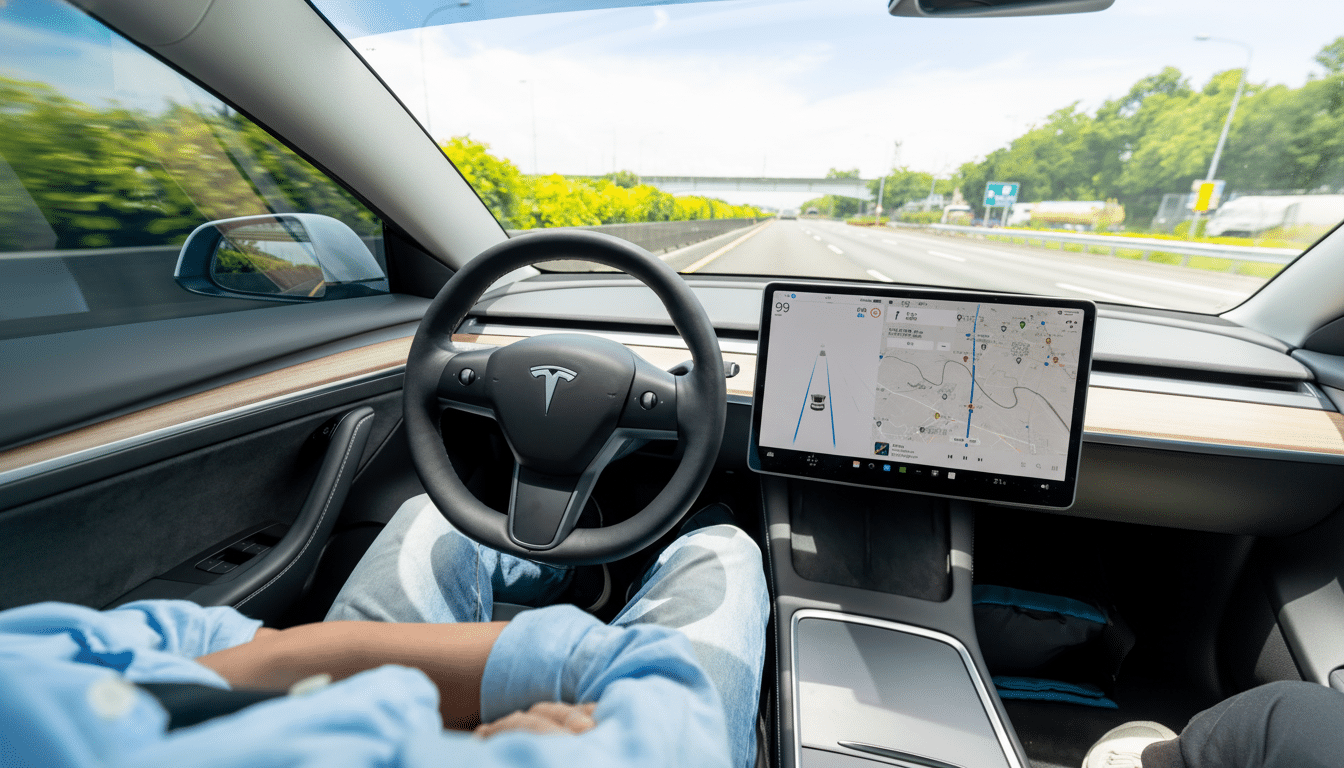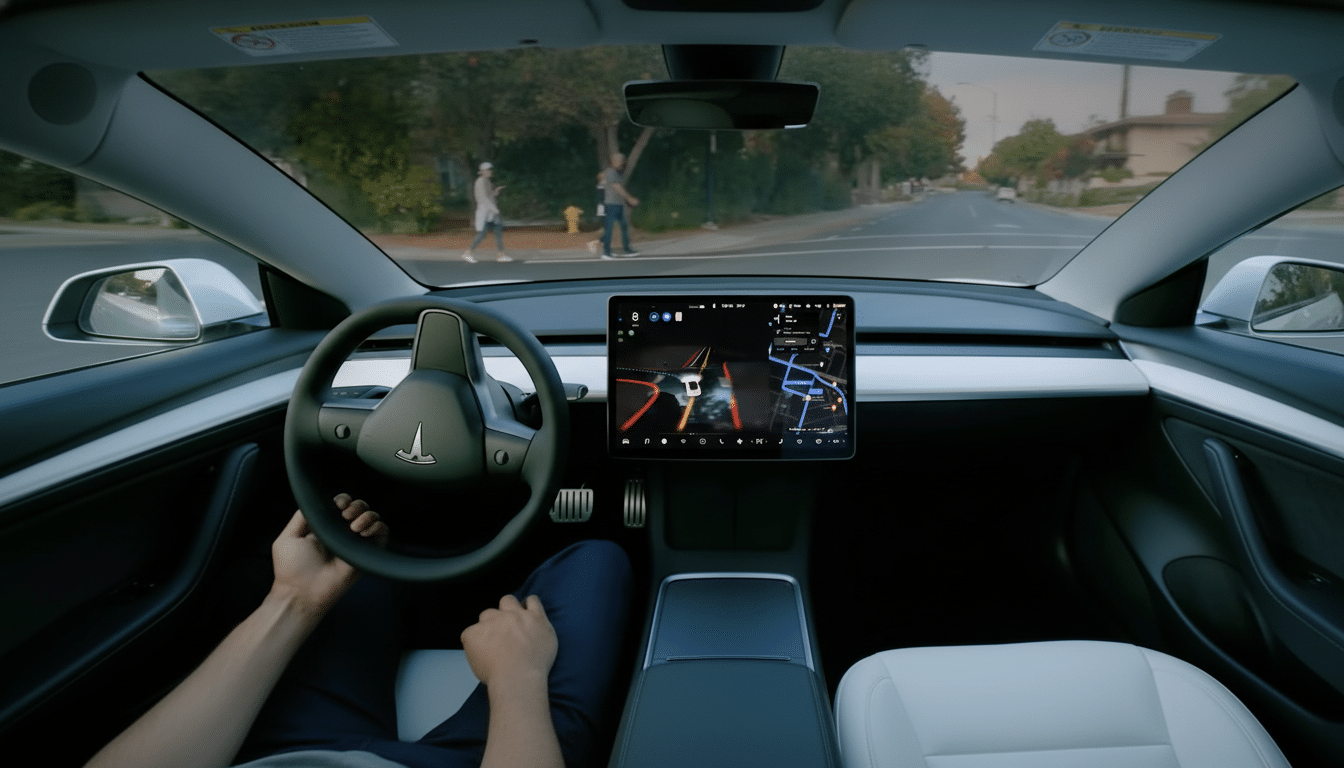Elon Musk says Tesla is almost ready to allow drivers to engage in texting while the car takes over the road. The statement, which came from a recent shareholder meeting and was reported by Electrek, means the capability could be available to Full Self-Driving users in a couple of months. It is a brash promise that runs up against the realities of bad wiring, junk sensors, poor computer programming and — every once in a while — unscrupulous operators who drive under the influence anyway.
What Musk Actually Promised About Allowing Texting
Musk characterized the shift as a measure of FSD’s maturity, suggesting that the system is now sufficiently advanced for drivers to briefly take their eyes off the road and send messages. Today at Tesla, that driver monitoring (with a steering wheel torque sensor and cabin-facing camera) discourages phone use by flashing alerts when it detects the presence of a handheld device while Autopilot or FSD is enabled. Tesla’s owner’s manual very clearly instructs drivers not to be in the act of handheld texting or calling while they are using devices in this mode.
- What Musk Actually Promised About Allowing Texting
- The Safety and Legal Hurdles to Tesla-Enabled Texting
- What Would Need to Change in Tesla’s Driver Monitoring
- Regulatory scrutiny is already intense for Tesla
- The timeline reality check for Tesla’s texting claim
- Bottom line for Tesla owners considering texting claims

Allowing drivers to text would have Tesla loosen or reconfigure those lockouts. That would constitute quite a philosophical shift: Instead of regarding phone use as a distraction, it might be something FSD could help cover for, at least at times.
The Safety and Legal Hurdles to Tesla-Enabled Texting
Texting while driving is illegal in most of the United States. Montana is the only state that does not ban texting on its highways, although it is restricted in many Montana localities. In states that permit “hands-free” usage, laws almost everywhere bar drivers from looking away from the road to read or write new messages. A software patch would not let drivers skirt those laws.
So, too, does safety data that just doesn’t add up with the theory. NHTSA says 8% of traffic fatalities are attributed to distraction, with 3,308 people dying in distraction-affected crashes in 2022. Texting is particularly dangerous, researchers say, because it involves visual, manual and cognitive distraction. At a speed of 55 miles per hour, five seconds of eyes-off-road — or about the time it takes to read a text and respond with an “OK” — constitutes long enough to travel the length of a football field.
Just as significant, Tesla’s FSD Supervised version remains an SAE Level 2 system. And so the driver has to remain ever vigilant, always ready to take control. The Insurance Institute for Highway Safety has long stressed that Level 2 capabilities are driver assistance, not automation, and should not facilitate extended glances away from the road or use of devices.
What Would Need to Change in Tesla’s Driver Monitoring
For texting to be “allowed,” for example, Tesla would have to recalibrate driver monitoring. A cabin camera today would flag handheld phone use and signs of inattention. Alternatively, a more lax policy could allow for glances of limited duration or turn off the handheld device warning altogether — moves that would be contentious for safety advocates and regulators.

Most commonly, you hear that there is global precedent for allowing non-driving tasks — but not at Level 2. Drive Pilot by Mercedes-Benz, a Level 3 system that has been certified and which you can get on select models if you’re in California and Nevada, will let drivers take their eyes off the road when traffic is crawling on highways. The critical distinction: In Level 3, responsibility during active operation is taken on by the automaker, not the human driver. FSD Supervised has not been marketed or branded by Tesla as Level 3, nor has any regulatory body declared it to be so.
Regulatory scrutiny is already intense for Tesla
Tesla’s driver-assistance features are under a microscope. NHTSA has been probing Autopilot crashes for years and also forced a broad software recall aimed at enhancing driver monitoring and engagement in control. The agency has also begun an inquiry into the efficacy of those treatments. Any policy that normalizes the use of devices while FSD is active would be met with new lines of questioning from federal and state regulators, insurers and plaintiffs’ attorneys.
Musk has also mentioned more aggressive driving profiles — sometimes referred to as Mad Max — that make for faster passes and frequent lane changes. More assertive behavior and in-cabin enforcement policies would be a tough sell to regulators with their eyes on minimizing risk.
The timeline reality check for Tesla’s texting claim
Musk’s time frames on self-driving technology have repeatedly proven to be optimistic. He has promised coast-to-coast autonomy, sleep-in-your-Tesla vehicles, and a fleet of robotaxis on the road — none of which have materialized as advertised. Tesla’s end-to-end neural network approach in FSD v12 has wooed some testers with a smoother interaction, but it still makes mistakes that necessitate rapid human intervention. That is incompatible with a driver who is reading a phone.
Bottom line for Tesla owners considering texting claims
Even if Tesla does give the ability to send texts while FSD is on the road, current laws still hold who they consider the driver in any given case — and system design requires them to be looking at the road. Because hands-free voice-to-text via your vehicle is the safe, legal route in most places. And until FSD is certified for an even higher level of automation and the law lets you legally take your eyes off the road, “text and drive” is more a marketing provocation than a life-altering change. The best message remains the simplest: eyes up, phone down.

